In Situ Grafting
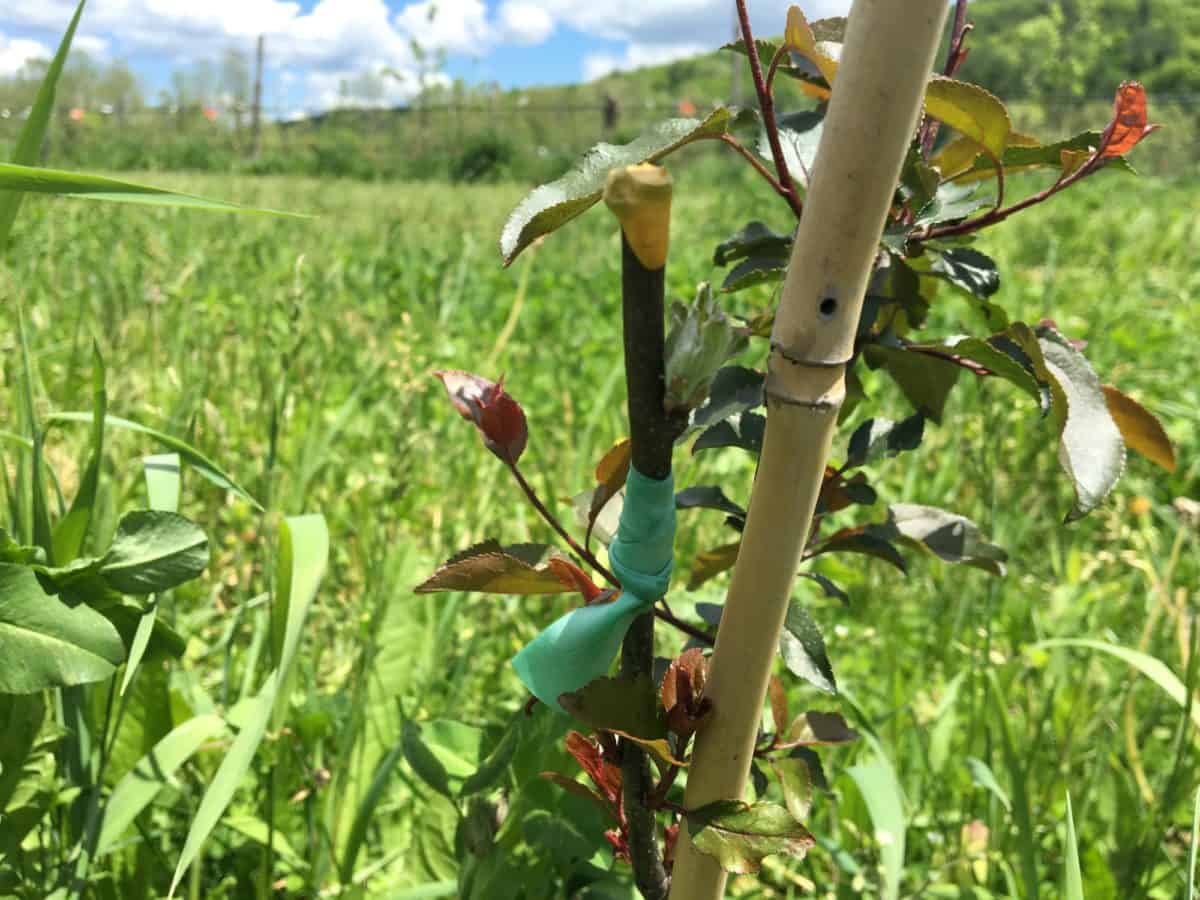
The following is a planting method that we invented (Not claiming to be the only or the first!) here on the farm. We think this method is the best for planting resilient trees in low input management systems with low establishment costs, high survival rates and superior growth by age 3.
With this method compared to planting commercial nursery trees you will:
a. Save a lot of money
b. Have caught up to or surpassed the nursery grown tree by year three.
c. Have taught yourself a valuable skill so you can reuse established rootstocks in your orchard should a tree be girdled by mice.
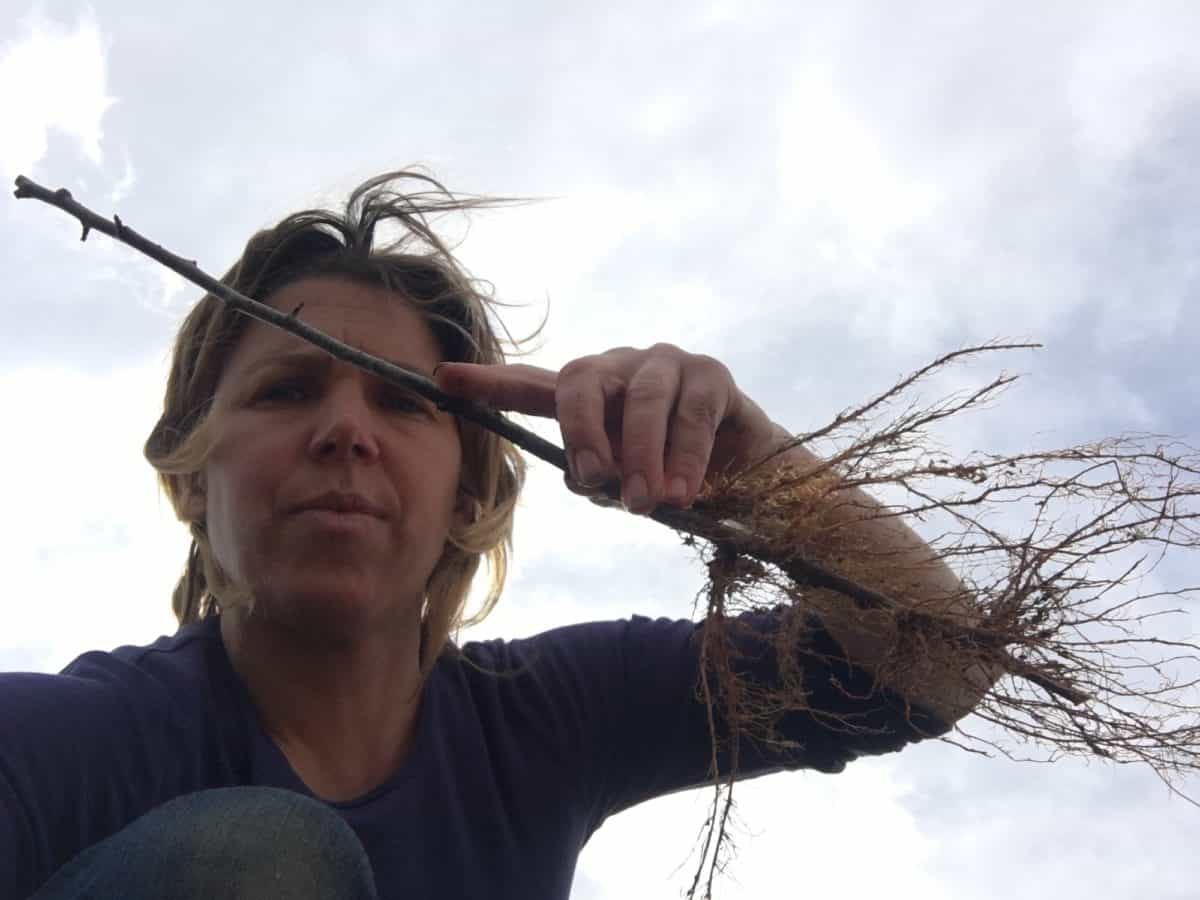
We start with high quality, homegrown B118 rootstocks. B118 is an extremely cold hard, less-vole-attractive than some, precocious, standard size rootstock. Look at the mass of roots on this stock! That's a healthy vibrant root system with an already functioning mycorrhizal network.

Because they are grown in a stool bed and layered with compost, biochar and local hardwood bark mulch, and grown organically with no herbicides or synthetic chemicals they are able to form relationships with mycorrhizal fungi. This is a significant factor in the tree building a healthy immune system and being able to access more nutrients and minerals in the soil. We have observed this to be a huge head start over the widely available conventionally grown rootstocks.
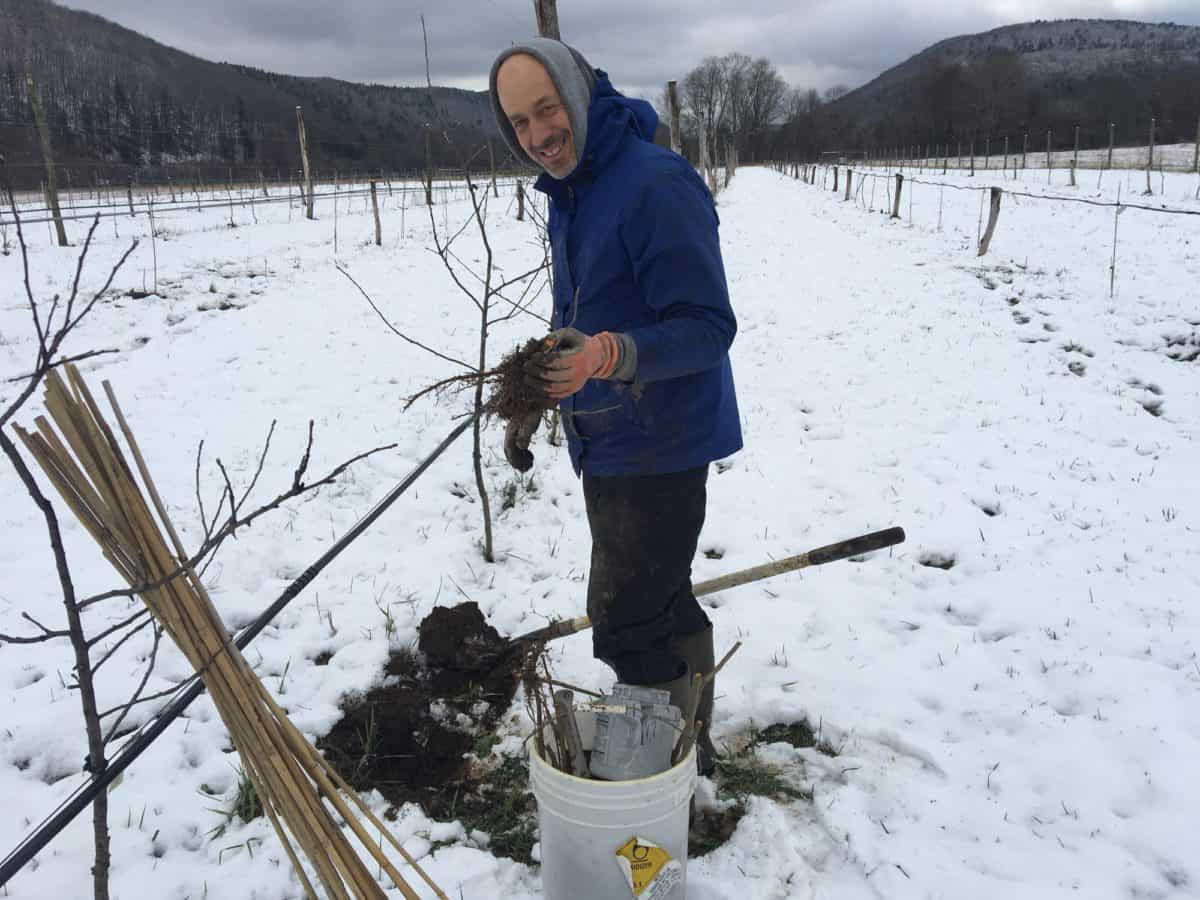
Second, we plant the rootstock right into the orchard! Plant them first thing in the spring (In this photo Ezra just happens to be replanting in a freak April snow storm...it wasn't cold and the snow soon melted).
There are three reasons to plant right into the orchard instead of a nursery. The most important is avoiding transplant shock. If your beautiful nursery tree suffers any kind of stress after being planted (which in low-maintenance systems they invariably do) any growth gained in the nursery is basically lost and you will either need to invigorate the tree that winter by heading back hard, or risk the dreaded runting out of the tree.
The ancillary reasons are that we have found the labor savings of a nursery is not as great as you may imagine. Besides you will see a greater return on investment you make in the site where the tree will spend the rest of it's life. Also, it's hard to calculate exactly how many tree to grow to fill a row with a specific variety for example. Some nursery trees may die, so you either have to plant extra or fill in spaces with another variety. When you graft in place you can put exactly what you want where you want it.
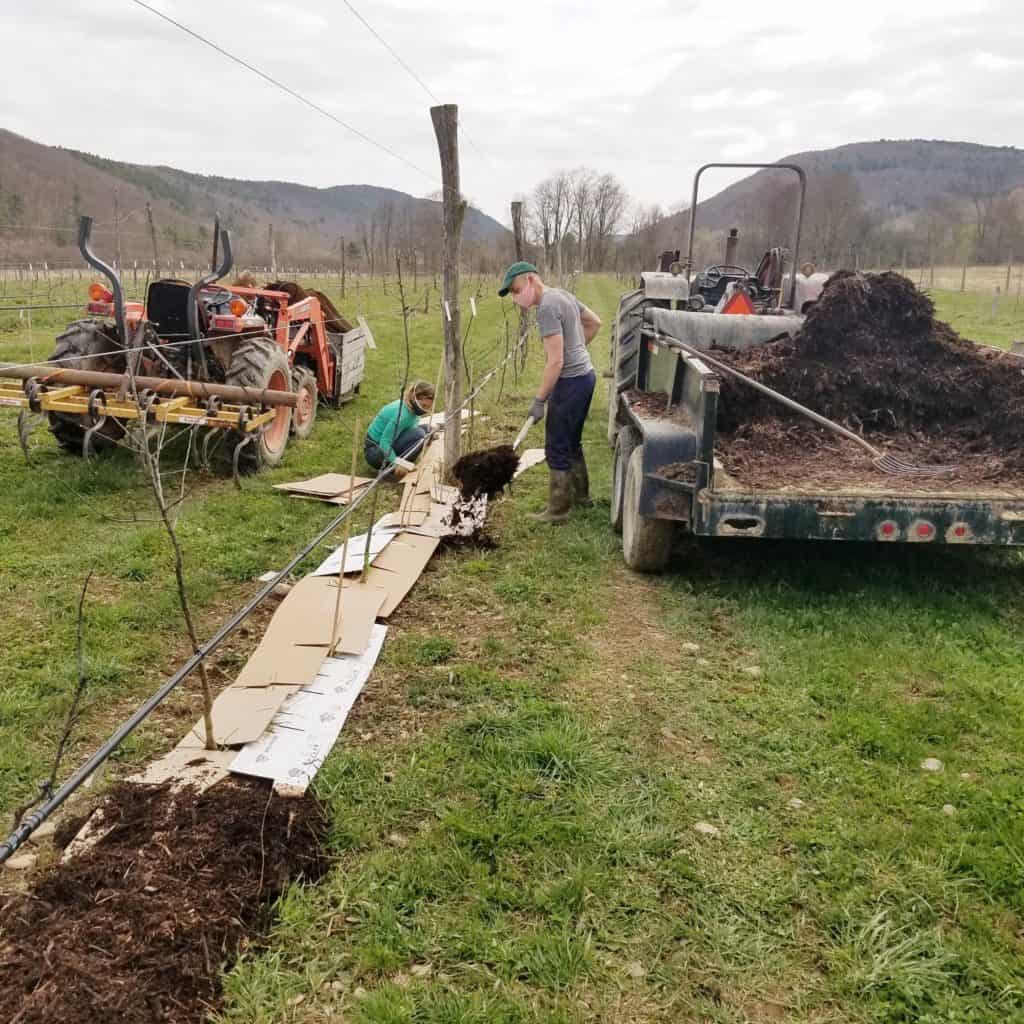
Next, let them grow for a year. Seriously. This is the year they get over their transplant shock. Head them back to a nice healthy bud, add minerals, compost and organic fertilizer, mulch around the tree with a layer of cardboard, and hold the cardboard down with bark mulch. Sawdust is ok but will require more nitrogen to beak it down, hays works but be super vigilant because it encourages voles and mice. This mulch will give you weed control for the entire growing season and help keep the soil moist. Everything is going to grow better if you can water it regularly! At the end of the season pull the mulch away and put a spiral tree guard around the trunk to protect it from voles.
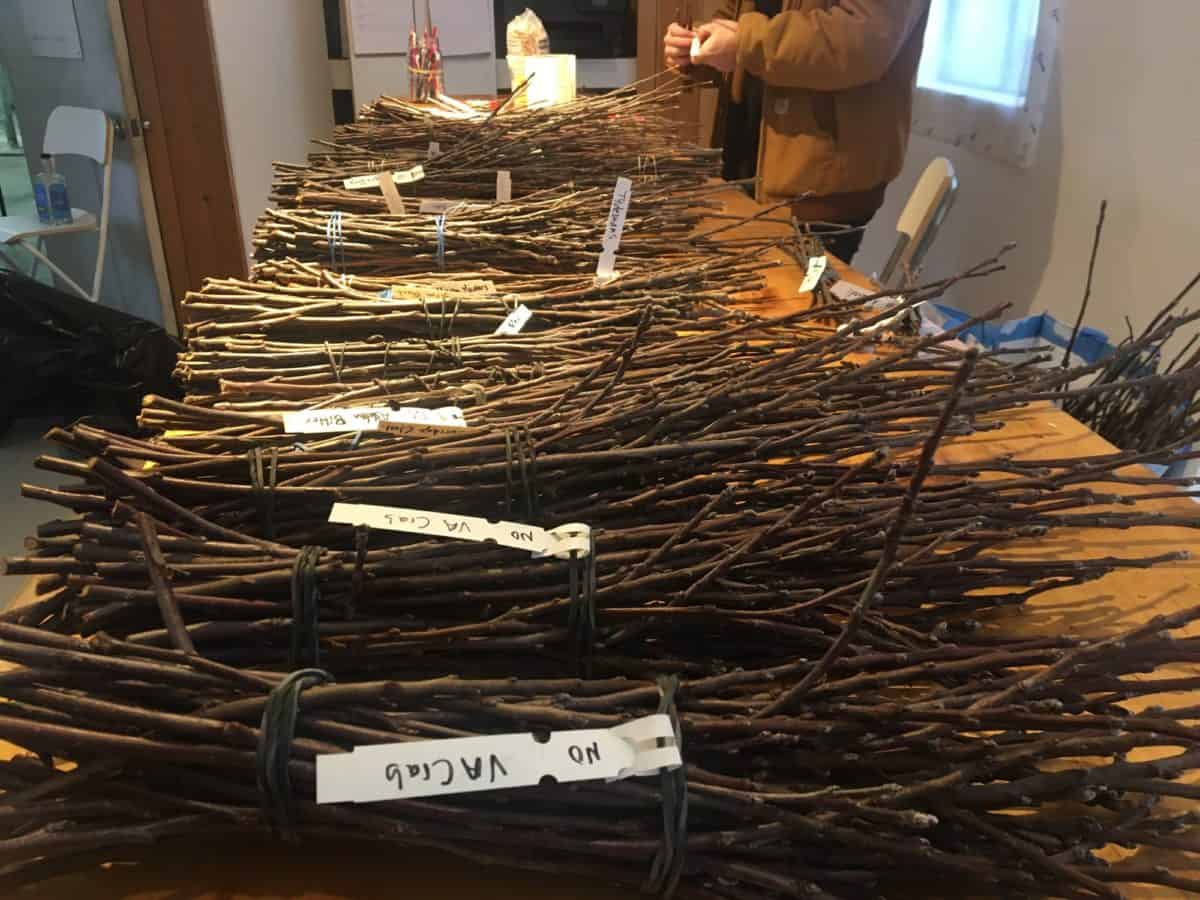
The winter following planting, you will need to procure dormant scionwood. We sell scionwood in our seasonal scionwood shop.
Keep the scionwood slightly damp, in a plastic bag with holes (so it can breath), in the fridge and never in the presence of apples or other ethylene producing fruit.
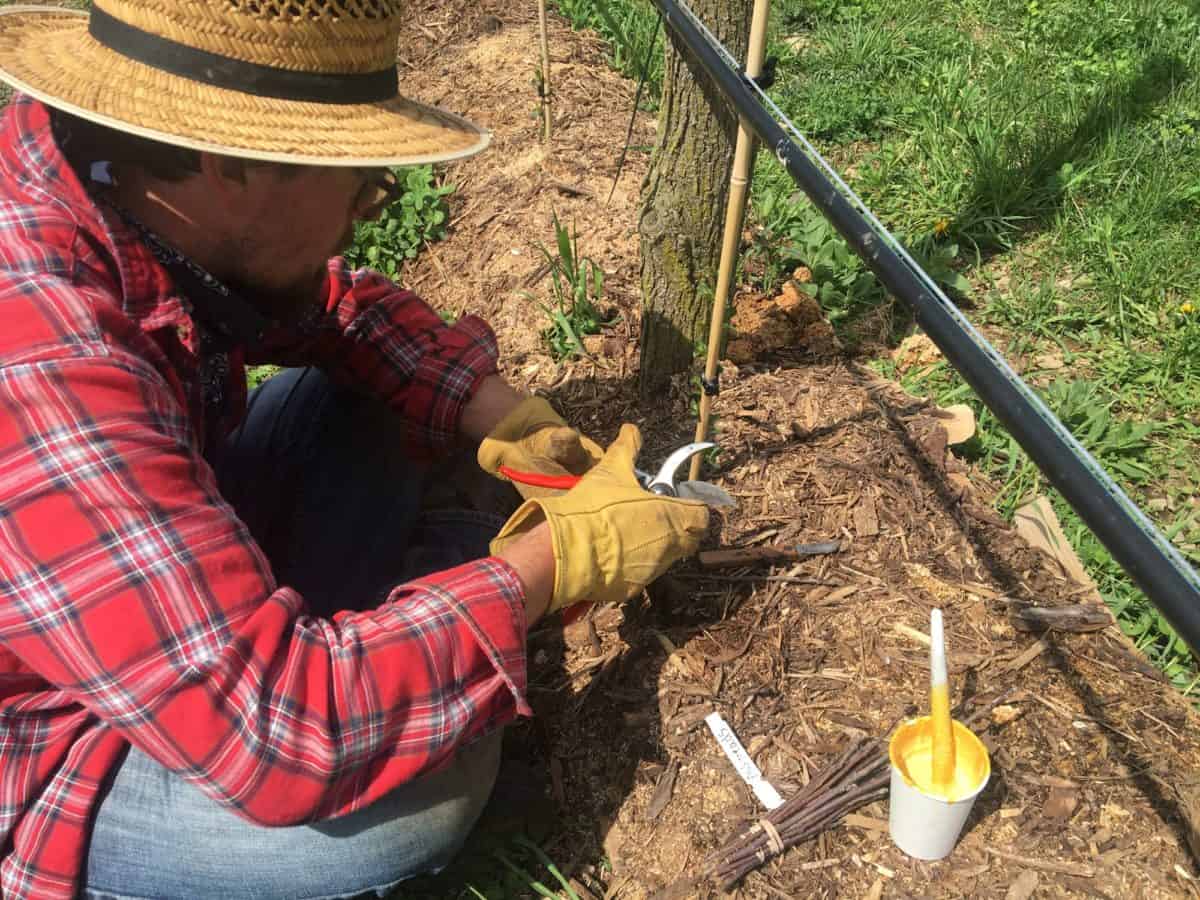
The best time for in situ grafting is just after the frost free date. If the weather looks good, do it earlier. You just don't want the healing tissue to freeze. We like whip and tongue grafting the best because when birds land on the growing shoots, or a strong wind storm occurs, the budded union can easily break.
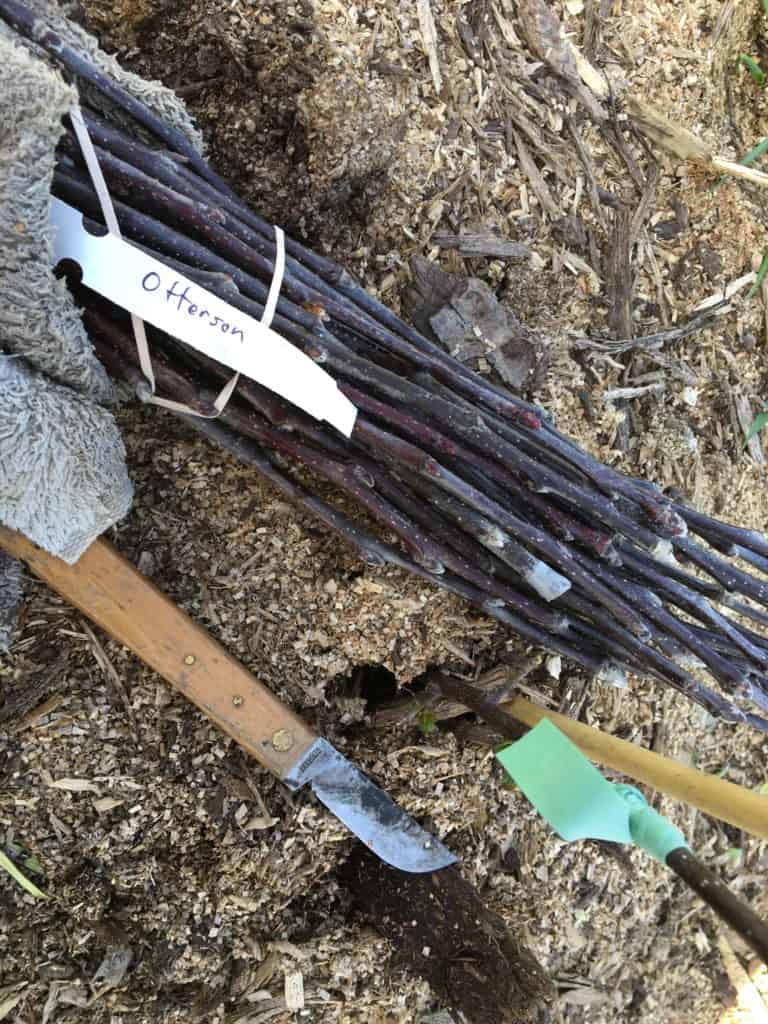
A few things to keep in mind when doing in situ grafting:
Graft into the growth that occurred in last year's growing season (1 year wood).
Scion wood dries out quickly in the wind and sun, even if it isn't warm. Keep it wrapped in a damp towel.
Place grafting compound on the top of the scion only. If your grafting band is tight, no need to wax it...the cuts heal super quick when the sap is running!
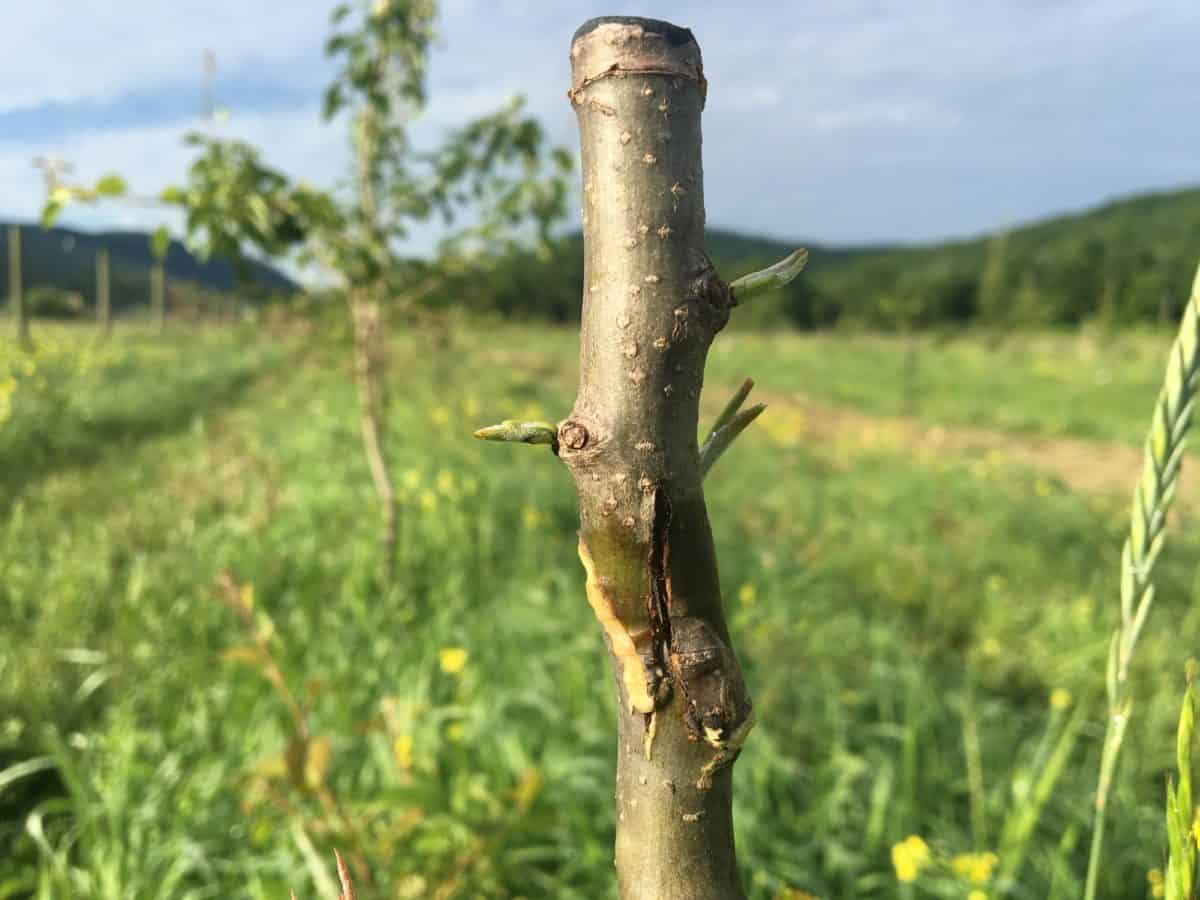
Because the roots are healthy and strong, because the sap is flowing and promoting rapid healing, you should see callus tissue forming and buds sprouting with in a few weeks. Once again, give your baby compost and minerals and mulch it with cardboard and bark. This is now the "second year" of the tree's life.
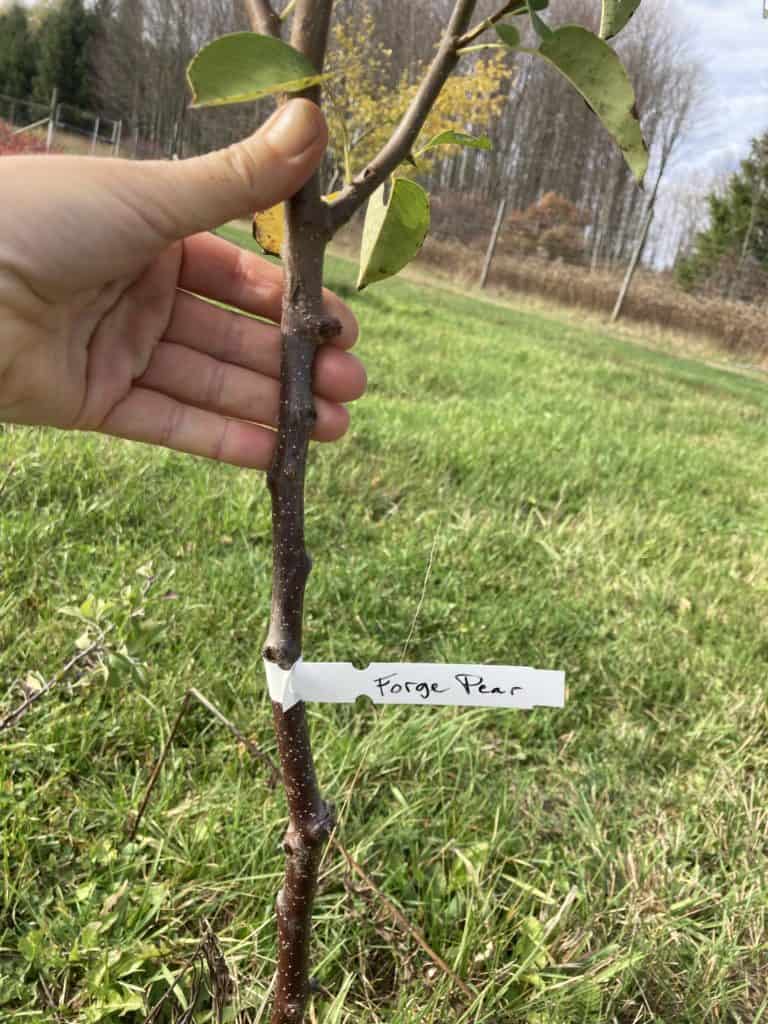
See the whip and tongue graft scar where Autumn's hand is?
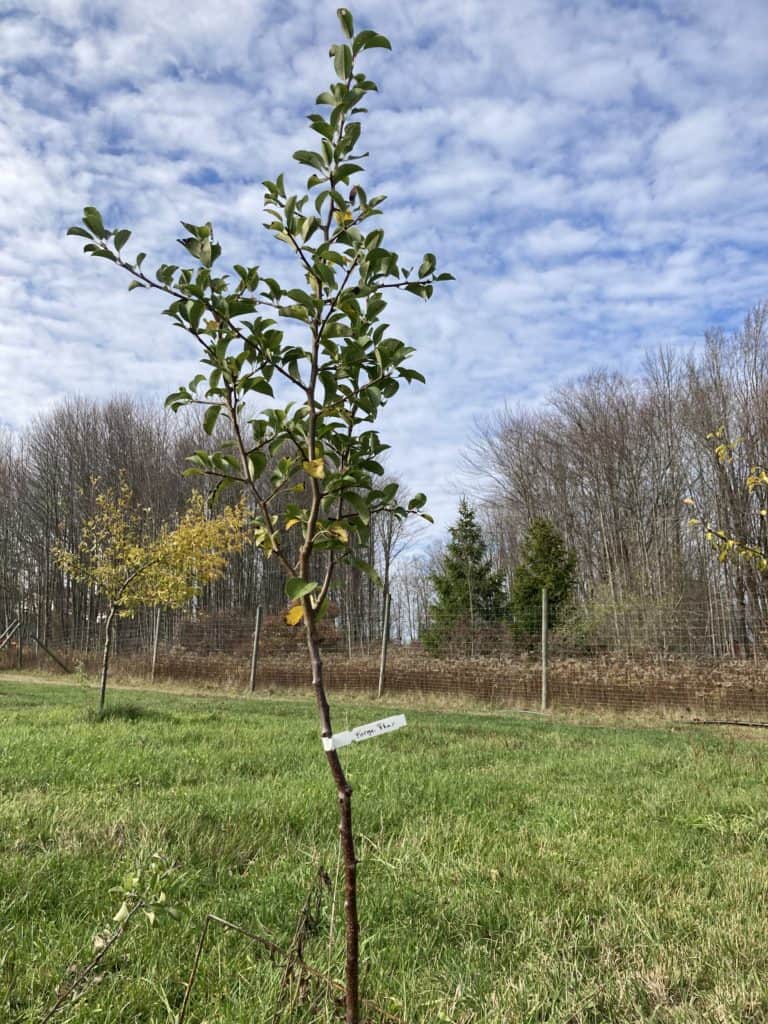
The healthier and more vigorous your rootstock, the more growth you will get on the graft. This scion from a wild pear tree we love was grafted in situ on a root sprout from a tree that was cut down. This photo was taken 4 months after the graft was made. It is about 5 feet tall.
If you grafted onto a 1 year old rootstock, you probably wont get 5' of growth, but over the growing season the tree should put on nice, vigorous growth. At the end of the growing season, during the late winter, head the leader back about 1/3 of the way from the top.
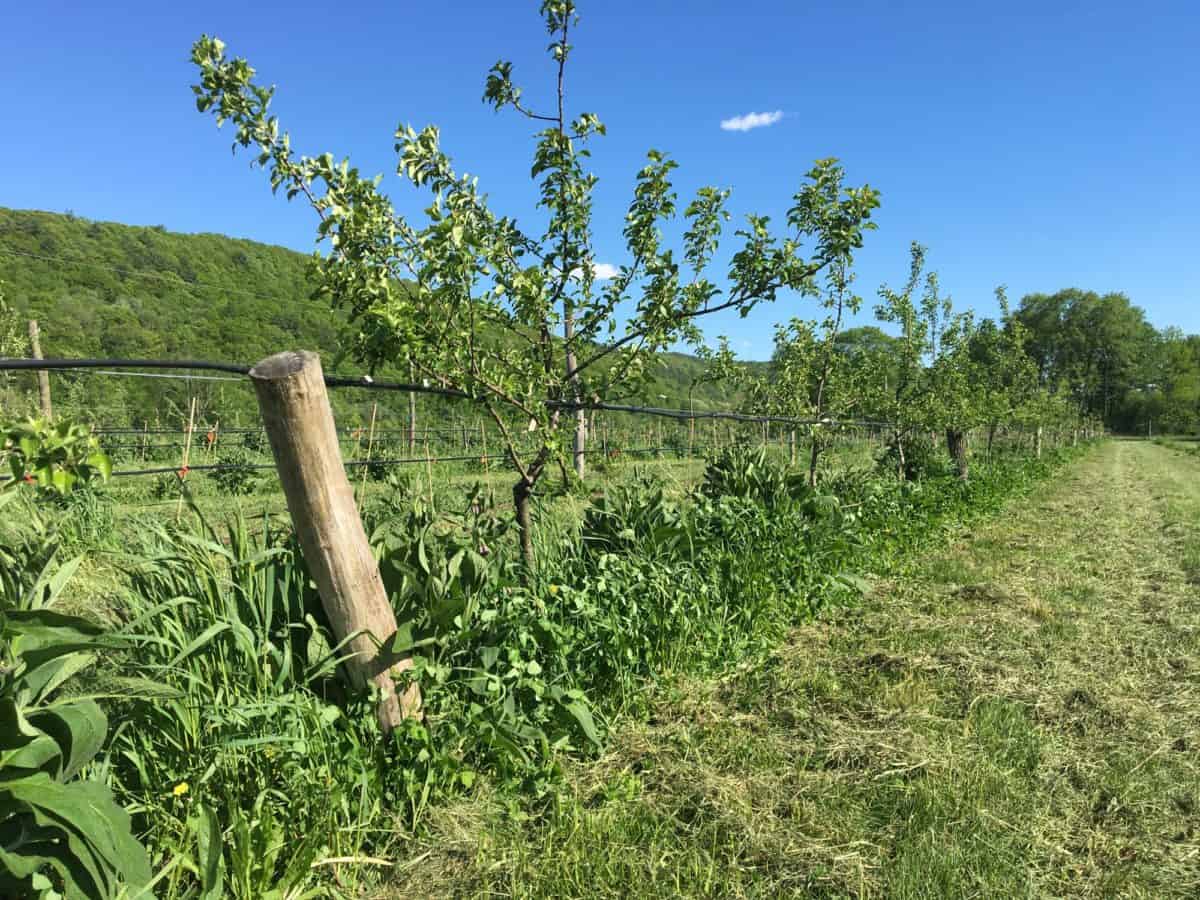
I our experience, by the third or fourth year, the in situ grafted tree has caught up to the nursery tree. These Frequin Rouge on B118 are in their fifth year and are a mix of nursery trees we grew, and in situ grafts we made the following year because some of the trees had died. It's hard to tell which are which other than the graft placement. You can't see it in the photo because the apples are tiny, but they also had their first crop this year.
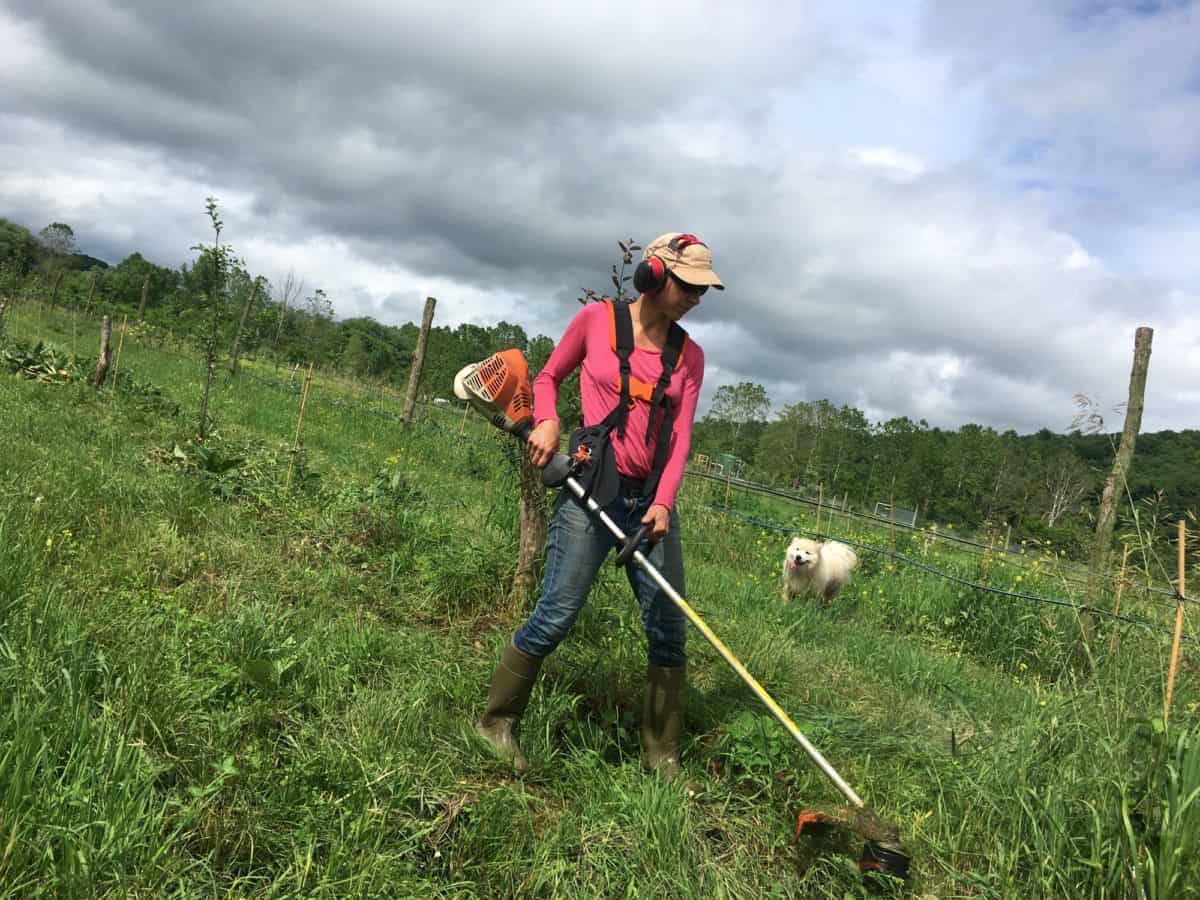
In an organic management system we recommend keeping the tree mulched for the first 4 years of it's life so you can get good vigorous growth before the tree starts cropping. After that we frost seed the rows with clover and plant comfrey to out compete the sod and mow or weedwack in between the trees several times a year depending on growth.
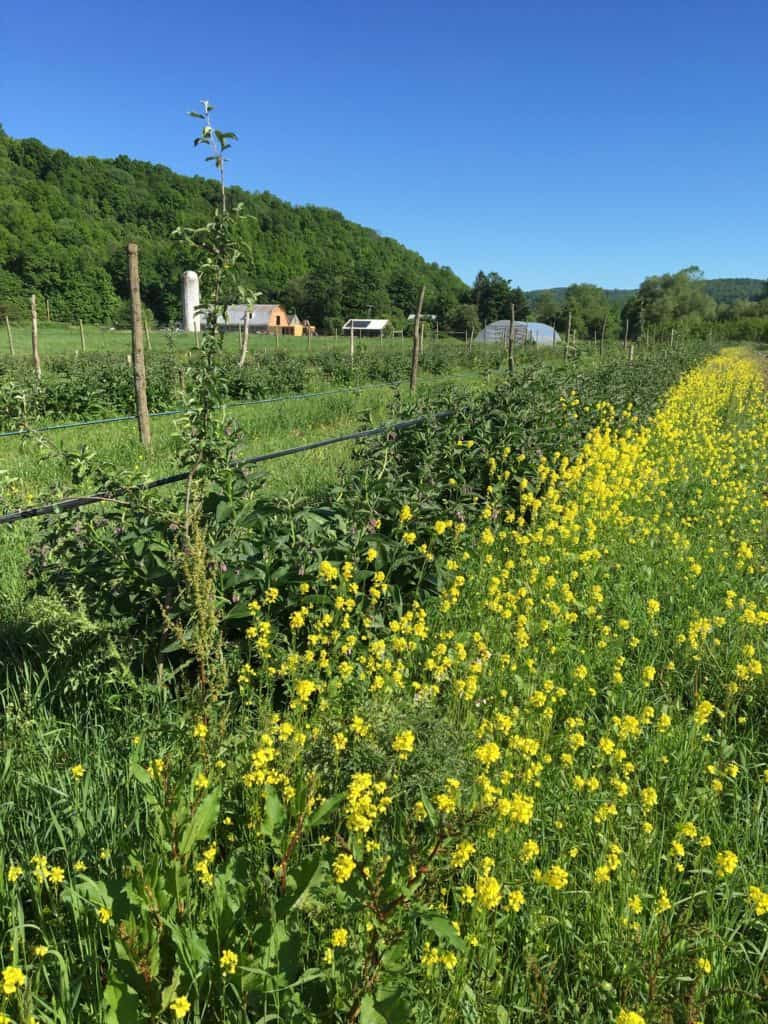
How do we start an orchard, a planting of trees that have the capacity to live for many human generations, do it in a way that is in alignment with the goals of sustainable and regenerative agriculture and have it not die and be economically practical to create and maintain? Where is the sweet spot along the spectrum of intensively managed to outright neglect?
In modern, high density planting and training systems, where establishment costs can reach $30,000 per acre and higher, maximum yield per acre as early as possible is the focus. These systems are high stakes, and high input since the weak nature of a highly dwarfed tree requires a highly managed environment. For cider orchards with lower yielding varieties and lower apple prices and for orchardists unwilling or unable to provide a rigorous pest management program (by spraying timely, effective, chemical pesticides and herbicides), this system is even riskier.
Somewhere in the course of growing dozens of different varieties on several disparate sites and trying many different training systems, rootstocks, planting and growing methods and observing which trees survived and even thrived and which trees just needed a more intensive management system than we could provide, we settled on this technique for planting new orchards, ones that will hopefully outlive us!
Thanks for reading!
-Autumn Stoscheck
